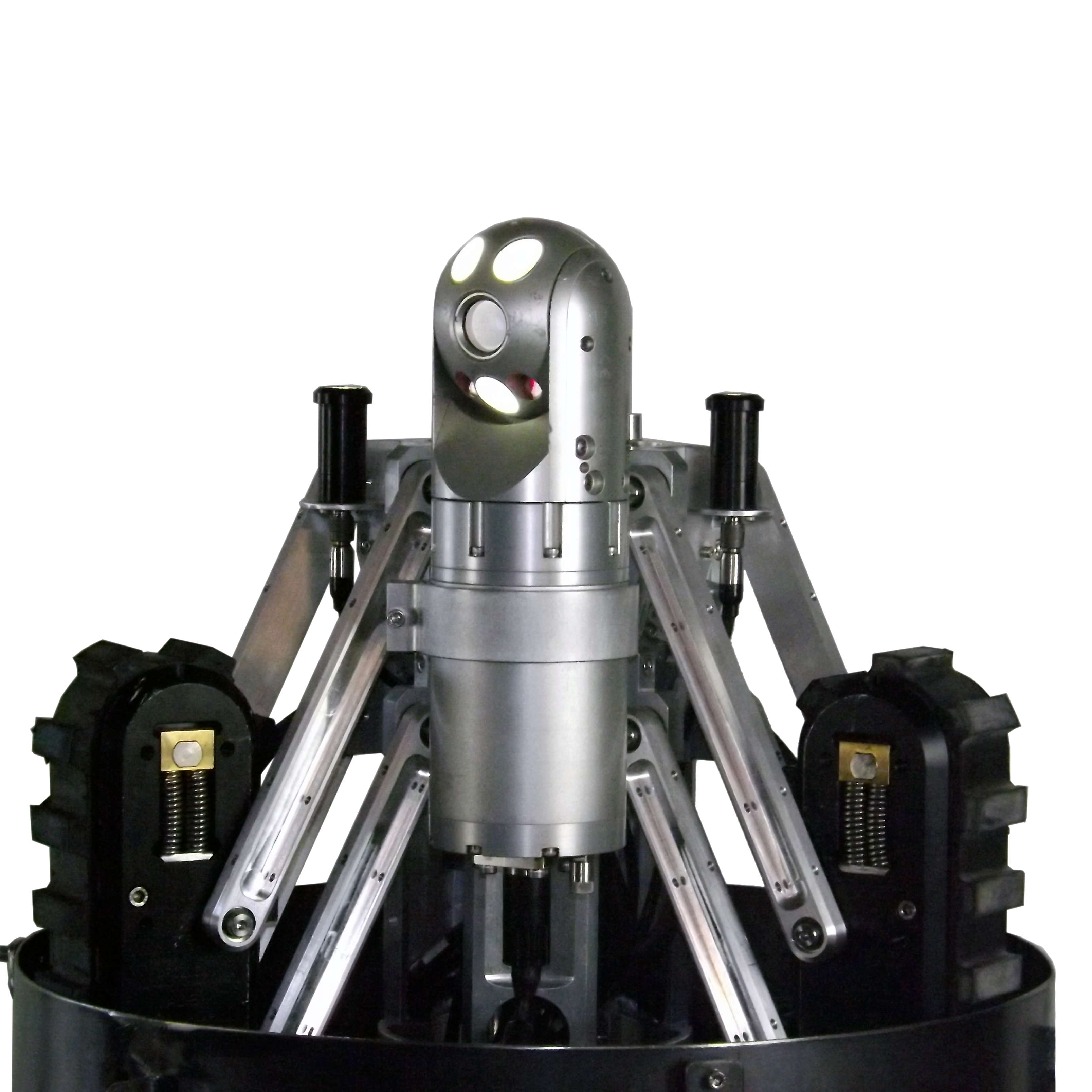How Marsupial Robots Eliminate Manual Access to Confined Space
Ask an expertA common landmark across offshore operations, a semisubmersible platform is a specialized marine vessel that can serve for a variety of purposes including offshore drilling rigs, oil production platforms, safety vessels, and crane vessels. While submersible platforms are supported by resting on the seabed, semisubmersible vessels do not. Their buoyancy comes from ballasted pontoons below the ocean surface and waves. Structural columns are used to connect the pontoons and operating deck. Semisubmersible vessels can convert from a deep to a shallow draft by removing ballast water from the hull, therefore becoming surface vessels. Every tank in a semisubmersible platform must be inspected at least once every five years with more frequent inspections required if defects are found. Given the diverse and critical functions of an offshore semisubmersible platform, it is imperative that the best available technology is being leveraged to help ensure maximum productivity and minimal risk for continued sound operations.
The Challenge
Eliminate the need for confined space entry to deploy remotely operated vehicles used for pontoon tank inspection.

-01.png)
Semisubmersible platform tank inspection is a necessary action in any robust risk management program, yet current practices present serious risk to inspectors responsible for carrying out this treacherous work. Different types of tanks include partially and fully filled ballasts as well as void spaces. A rope access crew is required to enter the hull and use ropes to inspect the environment. Given the scale of these offshore platforms, this involves working from heights, yet another risk on top of manned confined space entry which is a known hazard that could potentially result in a high risk of injury and/or death.
Beyond health and environmental concerns, rope access crews take up limited bed space offshore, displacing maintenance crews. Therefore, it is important to identify a solution that maximizes optimal operations.
Robotics have been identified as the ideal solution for tank inspection. Through remotely operated technology, no inspectors are exposed to height hazards nor confined spaces. However, current practices still require confined space entry in order to deploy the inspection robot. Industry leaders have sought a better solution that will eliminate confined space entries entirely.
This particular project focused on deployment, support, and recovery of inspection robots by way of a 150-millimeter (6-inch) internal diameter vent pipe. The tank was located 50 meters (170 feet) below the topside pipe end. The inspection scope included general and close visual inspection as well as coating condition and hull cracking assessments.
The Solution
Custom deployment robot enables unmanned tank entry of remotely operated vehicle by way of access through vent pipes.

 OnSpec Custom Deployment Crawler
OnSpec Custom Deployment CrawlerAn OnSpec custom robot based on Eddyfi Technologies TriTrax™ vertical crawler with industrial transportation tracks was adapted to include a deployment tube for a third-party remotely operated vehicle, or ROV.

TriTrax™ Vertical Crawler
The mobility and support solution for microROVs was responsible for transporting the inspection system through hundreds of feet of vent piping with a majority of vertical spans. The deployment mechanism utilized an electromagnet to hold the ROV in the tube while the TriTrax traversed the comprehensive vent lines. The custom marsupial crawler was designed to deploy the ROV in a vertical or horizontal orientation depending on how the venting entered the tank, careful not to block airflow in the vent pipe. Once the marsupial robot arrived at the ballast tank, the electromagnet was released to seamlessly deploy the ROV into the tank. The custom robotic platform served as a communications, data, and power base station during inspection. Providing real-time communications to topsides, the deployment crawler was also necessary for recovering the ROV from the tank and extricating the system back to topsides.
Ask an ExpertBenefits
- With inspectors no longer exposed to confined space and height hazards, crew size is also reduced along with operating costs.
With a proven track record of providing unique marsupial crawlers to leaders across the energy sector and beyond, Eddyfi Technologies’ OnSpec custom solution was not only successful in deploying the ROV for robotic inspection of tanks but also enabled reduction in the inspection crew size from over 10 to two or three personnel. This directly contributes to the lower operating expenses afforded by deploying an industrial robotic solution for remote operations.
Providing remote visual inspection is just scratching the surface of what an OnSpec custom solution can do; contact our robotic experts to discuss how to best leverage our remote-controlled technology trusted by world leaders interested in maximizing productivity and reducing —and in some cases— eliminating human and environmental risks.








